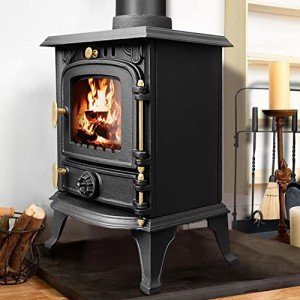The Multi Fuel Burning Stoves Case Study You'll Never Forget
Understanding Multi-Fuel Burning Stoves: A Comprehensive Guide
In the contemporary landscape of home heating, multi-fuel burning stoves stand apart for their flexibility and performance. These stoves offer property owners an environmentally friendly option to traditional heating techniques, with the capability to burn various fuels, consisting of wood, coal, pellets, and more. This article looks into the mechanics, benefits, types, installation considerations, and upkeep of multi-fuel burning stoves, making it easier for readers to consider this alternative for their heating requires.
What is a Multi-Fuel Burning Stove?
A multi-fuel burning stove is a kind of appliance created to burn more than one type of fuel for heating purposes. Unlike single-fuel stoves, which are restricted to one energy source, multi-fuel stoves can adjust to different fuels based upon schedule, personal preference, or cost-effectiveness.
Key Features of Multi-Fuel Stoves
- Versatility: Adapts to burning wood, coal, pellets, and often even gas.
- Effectiveness: Often created to accomplish higher heat outputs and lower emissions.
- Environment-friendly: Reduces dependence on fossil fuels by utilizing renewable resources like wood.
- Heat Retention: Many designs have materials that maintain heat, improving effectiveness.
Kinds Of Multi-Fuel Stoves
Understanding the different kinds of multi-fuel stoves can assist consumers in selecting the best fit for their homes. Below is a categorized list of typical multi-fuel stove types:
1. Wood-Burning Stoves
- Mostly created to burn wood but can likewise manage some biomass fuels.
2. Coal-Burning Stoves
- Effective for burning different kinds of coal and typically capable of burning wood.
3. Pellet Stoves
- Usage compressed pellets of biomass, renowned for their automated feeding mechanisms.
4. Combination Stoves
- These stoves can burn wood, coal, and in some cases pellets all in one unit.
5. Gasification Stoves
- Ingenious, ecologically friendly stoves that convert wood into gas before combustion.
6. Multi-Fuel Inserts
- Developed to be set up inside an existing fireplace, enabling flexible fuel choices.
Advantages of Multi-Fuel Burning Stoves
Multi-fuel burning stoves feature a variety of advantages, making them an attractive alternative for lots of homes. The following table summarizes the advantages:
Benefit
Description
Versatility
Ability to switch fuels assists adjust to price modifications.
Sustainability
Makes use of eco-friendly resources, minimizing carbon footprint.
Cost-effectiveness
Cost savings can be understood by choosing fuel based upon market rates.
High Heat Output
Effective heat generation provides constant heat.
Alleviate of Use
Numerous stoves included automated settings for benefit.
Visual Appeal
Includes a rustic appeal or modern design to home interiors.
Installation Considerations
When it pertains to setting up a multi-fuel burning stove, there are several factors to think about:
1. Flue and Ventilation
- Appropriate chimney or flue setup is vital for making sure safe exhaust of smoke and gases.
2. Area
- Choose a location that allows efficient heating distribution throughout the home.
3. Regional Regulations
- Always inspect local structure codes and policies connected to stove installation.
4. Labor Costs
- Working with an expert installer may contribute to in advance costs, however guarantees safety and compliance.
5. Area Requirements
- Ensure there is adequate area for the stove, as well as for the fuel storage.
6. Maker Guidelines
- Adhere strictly to guidelines provided by the stove producer regarding setup and operation.
Maintenance of Multi-Fuel Stoves
To guarantee longevity and effective operation, regular upkeep of multi-fuel burning stoves is vital. Below is a list of upkeep jobs to think about:
1. Regular Cleaning
- Clear out ash after every use to avoid buildup and keep air flow.
2. Chimney Inspection
- Have the chimney examined and cleaned up every year to prevent creosote buildup.
3. Fuel Quality
- Usage premium, well-seasoned wood or quality pellets to optimize efficiency.
4. Seal Checks
- Inspect and replace door seals as needed to ensure air tightness.
5. Expert Servicing
- Consider having the stove serviced by an expert at least as soon as a year.
Frequently asked questions
Q1: Can a multi-fuel stove burn all kinds of fuel at the same time?
A1: No, a lot of multi-fuel stoves are developed to run on one type of fuel at a time, but they can quickly change in between different fuels as needed.
Q2: Are multi-fuel stoves eco-friendly?
A2: Yes, multi-fuel stoves can be environmentally friendly, especially if they make use of sustainably sourced wood or biomass fuels, decreasing reliance on nonrenewable fuel sources.
Q3: What is the most efficient fuel for a multi-fuel stove?
A3: Efficiency can differ based upon stove style; nevertheless, dry, skilled wood is generally thought about among the most efficient fuels.
Q4: How do I know if my multi-fuel stove is working correctly?
A4: Regular tracking of heat output, lack of unusual odors or smoke beyond regular, and performing regular checks can help examine performance.
Q5: How much do multi-fuel stoves normally cost?
A5: Prices can vary commonly based upon the design and functions, generally ranging from ₤ 1,500 to over ₤ 5,000, omitting setup costs.
Multi-fuel burning stoves represent an adaptable, efficient solution for home heating. With my explanation to burn numerous fuels, these stoves provide substantial benefits for homeowners looking to stabilize convenience, cost, and environmental issues. Understanding the types, benefits, setup factors to consider, and upkeep requirements will assist consumers in making notified decisions about incorporating multi-fuel burning stoves into their homes. In an age where sustainability and versatility are critical, such stoves embody a practical approach to effective heating solutions.
